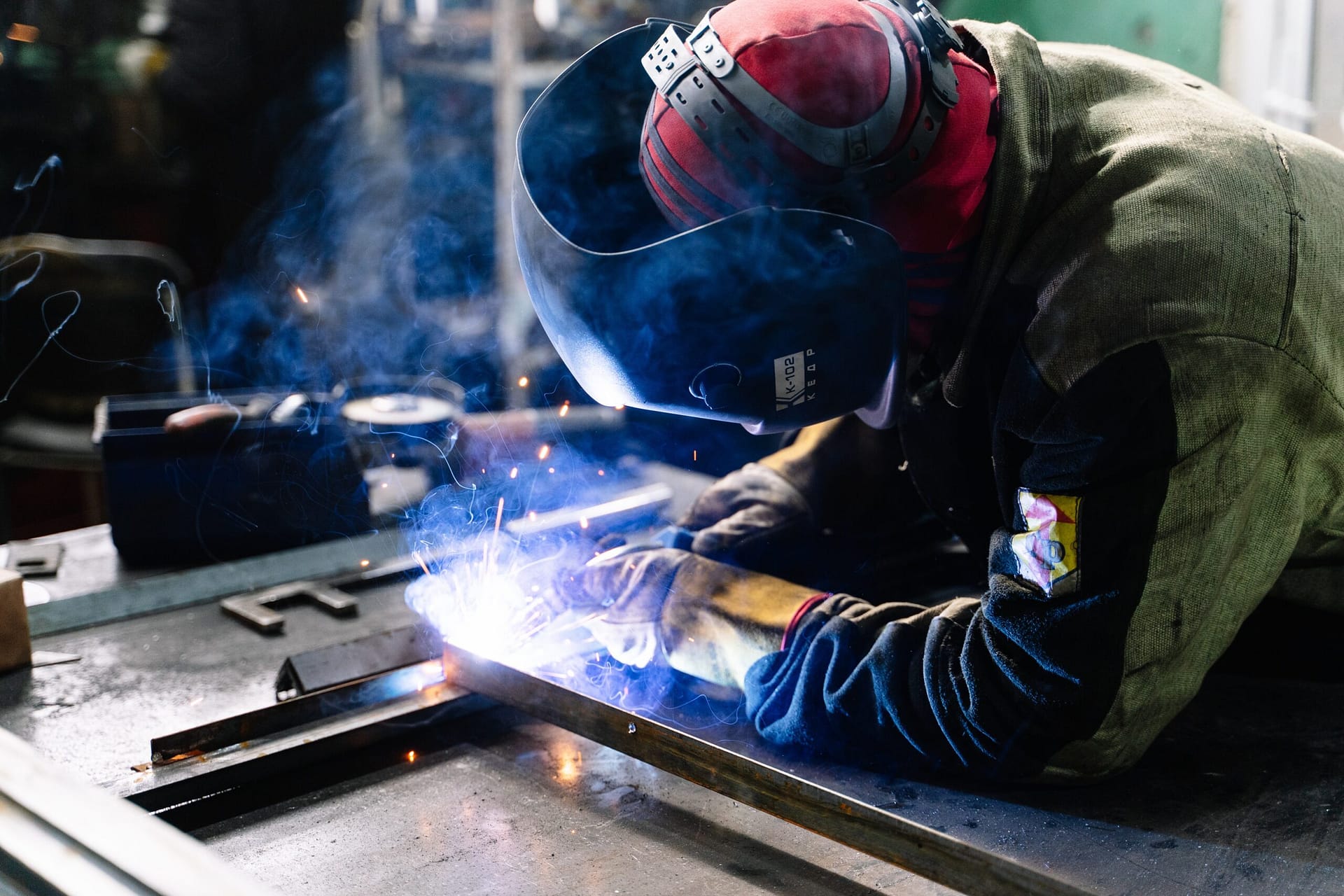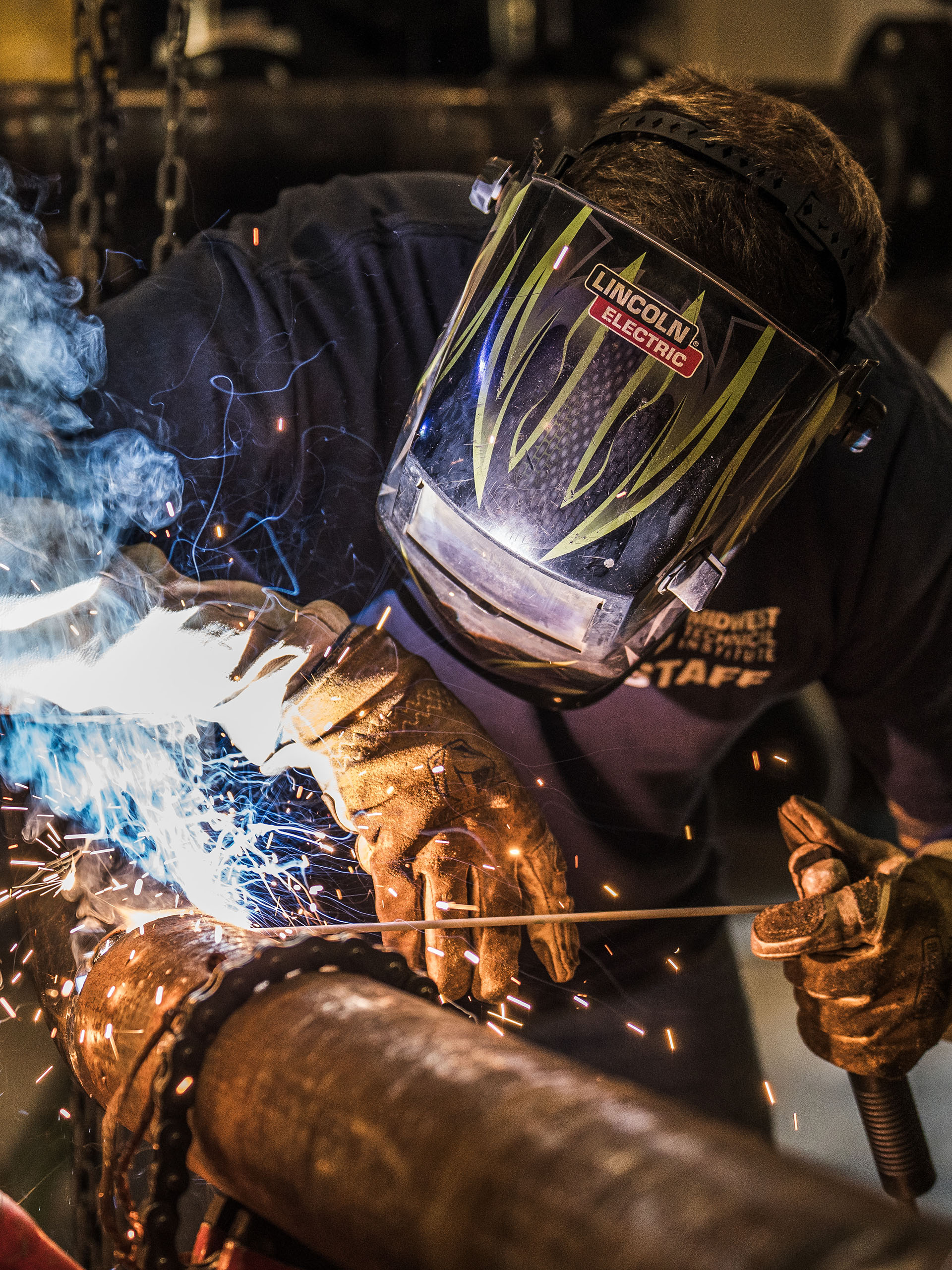Everything about Welding: Trick Insights Into Techniques and Finest Practices for Success
Welding encompasses a range of techniques, each suited for certain materials and applications. Comprehending these techniques, such as GMAW, SMAW, and TIG, is necessary for attaining excellent outcomes. The right tools and safety techniques can not be overlooked. As preparation and troubleshooting play crucial functions in the welding process, mastering these components can considerably improve the top quality of the final item. What are the crucial elements that ensure an effective weld?
Comprehending Different Welding Methods
Welding methods incorporate a range of methods, each matched to specific applications and products. Among one of the most typical strategies are Gas Metal Arc Welding (GMAW), Secured Metal Arc Welding (SMAW), and Tungsten Inert Gas Welding (TIG) GMAW, likewise called MIG welding, is popular for its speed and versatility, making it excellent for slim products. SMAW, or stick welding, is favored for its simplicity and effectiveness in exterior environments, specifically with thicker metals. TIG welding uses precision and control, making it ideal for complex work and non-ferrous steels (Belgrade Welding). Each strategy has its special advantages and factors to consider, enabling welders to select the most effective approach based on the job's needs, product type, and desired outcomes. Comprehending these techniques is important for successful welding
Crucial Welding Devices and Tools
While different welding methods need specific skills, the ideal tools and devices are similarly essential for attaining high quality results. Crucial welding equipment consists of welding machines, which differ relying on the strategy-- such as MIG, TIG, or stick welding. Safety gear, including safety helmets, gloves, and aprons, guarantees safety and security and convenience during the procedure. Furthermore, clamps and fixtures help safeguard products in position, making sure accuracy in welds. Consumables like welding rods, wire, and shielding gas are likewise critical components that influence the top quality of the weld. Devices such as cutters and mills help with surface area prep work and post-weld ending up, contributing to a specialist outcome. Purchasing top quality equipment eventually enhances the efficiency and efficiency of welding tasks.
Security Practices in Welding
Appropriate security methods are crucial in the welding sector to safeguard workers from potential threats. Welders should use suitable individual safety tools (PPE), consisting of helmets with proper shading, handwear covers, and flame-resistant clothing. Appropriate air flow is important to lower exposure to harmful fumes and gases created throughout the welding procedure. Additionally, employees ought to be learnt the appropriate handling of welding devices to stop accidents. Fire security actions, such as keeping flammable products away from the welding area and having fire extinguishers easily available, are necessary. Normal assessments of tools and work areas can assist recognize possible dangers before they lead to mishaps. By adhering to these safety and security practices, welders can develop a much safer working setting and lessen dangers associated with their trade.
Readying Materials for Welding
Preparing materials for welding is a crucial step that significantly affects the quality and integrity of the end product (Fabrication). Proper prep work includes cleaning up the surface areas to get rid of contaminants such as oil, corrosion, and dirt, which can compromise the weld. Techniques such as grinding, sanding, or making use of solvents are commonly employed to achieve a tidy surface. Additionally, making sure that the products fit with each other snugly is important; gaps can cause weak welds. It's additionally important to pop over here consider the positioning and positioning of the parts, as this will certainly affect the ease of welding and the last outcome. Lastly, choosing the appropriate filler material and guaranteeing compatibility with the base steels is crucial for attaining solid, durable welds
Tips for Getting High-Quality Welds
Achieving high-quality welds calls for attention to detail and adherence to ideal techniques throughout the welding process. Proper joint prep work is crucial, ensuring surface areas are tidy and cost-free from pollutants. Selecting the proper filler product and welding method based upon the base steels is critical for ideal bonding. Preserving regular travel speed and angle while welding can promote and stop issues uniformity. Furthermore, managing warmth input is crucial; too much heat can cause bending and damaged joints. Consistently inspecting the welds during the process enables immediate adjustments if needed. Employing ideal post-weld therapies, such as cleaning and stress alleviation, can boost the sturdiness and integrity of the weld, ultimately ensuring a successful outcome.
Fixing Typical Welding Issues
Welding frequently presents difficulties that can affect the top quality and stability of the final item. Common concerns such as porosity, irregular weld grains, and getting too hot can occur, each requiring details repairing methods. Recognizing these issues is necessary for welders to enhance their abilities and accomplish optimal outcomes.
Porosity Issues Discussed
Although porosity can often be overlooked, it continues to be an essential problem in welding that can compromise the integrity of an ended up product. Porosity describes the presence of tiny gas pockets within the weld bead, which can lead and damage the joint to premature failing. This issue typically develops from pollutants, dampness, or improper protecting gas protection throughout the welding process. To mitigate porosity, welders should validate that the base materials are clean and dry, make use of ideal protecting gases, and preserve regular welding specifications. Frequently evaluating the devices and atmosphere can likewise help pop over here identify potential problems before they show up in the weld. Resolving porosity successfully is vital for attaining solid, sturdy welds that meet high quality requirements.

Inconsistent Weld Beans
Inconsistent weld grains can substantially affect the top quality and stamina of a completed item. Different elements add to this issue, consisting of incorrect travel speed, inaccurate amperage settings, and irregular electrode angles. When the welder relocates also rapidly, a grain might appear slim and do not have infiltration, while moving too gradually can trigger excessive build-up. In addition, making use of the incorrect amperage can lead to either undercutting or excessive spatter, both of which concession weld integrity. The welder's technique, such as irregular lantern activity, can additionally result in irregular grain look. To alleviate these issues, welders must concentrate on maintaining constant, controlled movements and making sure correct equipment setups to attain uniformity in their welds. Consistency is key to achieving solid and dependable welds.
Overheating and Bending Issues
Extreme warm during the welding process can cause substantial getting too hot and warping concerns, impacting the structural integrity of the workpiece. read this article These issues commonly show up as distortion, which can compromise positioning and fit-up, making further setting up testing. Variables adding to overheating consist of the option of welding criteria, such as voltage and travel speed, as well as the type of material being bonded. To minimize these concerns, welders need to keep consistent travel speed and proper warmth input while keeping track of the work surface temperature level. Furthermore, preheating or post-weld heat treatment can help ease stresses brought on by fast cooling - Montana Mobile Welding and Repair Belgrade. Regular examination and adherence to best practices are necessary in preventing overheating and making certain the durability and reliability of bonded frameworks
Frequently Asked Questions
What Are the Profession Opportunities in the Welding Industry?
The welding industry supplies diverse job chances, including placements as welders, designers, inspectors, and instructors. Professionals can function in manufacturing, building and construction, aerospace, and auto fields, gaining from strong demand and competitive incomes in different roles.
How Can I Enhance My Welding Speed Without Sacrificing Quality?
To boost welding rate without sacrificing quality, one need to exercise efficient methods, keep equipment, optimize setups, and boost hand-eye coordination. Routine training and looking for responses can likewise significantly contribute to attaining faster, top notch welds.
What Qualifications Are Available for Welders?
Numerous certifications exist for welders, including those from the American Welding Society (AWS), the National Center for Building Education And Learning and Research Study (NCCER), and different industry-specific companies. These credentials boost employability and show ability effectiveness.
Just How Does Welding Impact the Properties of Metals?
Welding influences the buildings of steels by changing their microstructure, which can lead to changes in ductility, toughness, and hardness. Warmth input and cooling prices during the procedure substantially affect these product qualities.
Can I Bonded Dissimilar Metals Together?
